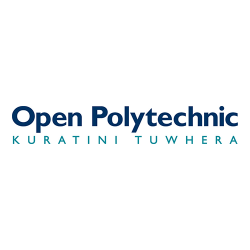
Enhancing Learning for Engineering Trade Learners: Augmented Paper-Based Materials in Course Design
Status
Completed: 28 May 2010
Project Details
A project completed in 2010, undertaken by The Open Polytechnic of New Zealand, to test the feasibility of embedding augmented reality targets, which could be viewed on computers using a simple webcam, into print material for second-year apprentice engineering trade learners at the Open Polytechnic.
Aims:
The main aims of the project were to:
- develop a process to embed augmented reality targets into course materials
- improve the learning experience for year-one apprentice engineering trade students using augmented reality technology
- achieve ‘proof of concept’ from an instructional design perspective where the learning materials provided an additional dimension for the learner
- trial the materials developed with a group of learners to see whether or not having access to the images improved their learning experience and helped them engage with the material.
Methodology:
The project used a qualitative methodology involving:
- participant observation (tutors’ and researchers' observations of student group)
- survey and interviews with the students on the effect of the technology addition.
Team

Cheryl Brown
Project Leader
The Open Polytechnic of New Zealand
Martin Glaeser
The Open Polytechnic of New Zealand
Sandra Maathuis-Smith
The Open Polytechnic of New Zealand
Gary Mersham
The Open Polytechnic of New ZealandStatus
Funding
$9,128.00 (excl GST)
Key Findings
The key findings from the project included:
- Proof of concept was achieved from an instructional design perspective where the learning materials provided an additional dimension for the learner.
- The process of adding easily accessible 3-D graphics to augment the paper-based learning packages used for teaching trade engineering theory also was achieved with relative ease and has potential. Due to issues with software not running and the insufficient number of responses, the learner trialling process would need to be repeated to have any validity.
- Issues related to computer compatibility caused difficulties for learners and meant that while the project team felt that the development of a process and associated learning had been successful, we were unable to trial the material fully with learners. The technological implications associated with the learners’ study environment presented greater challenges which limited the full potential of the outcome.
- There are other processes for accessing 3-D graphics that may be as easy to operate for those with minimal computer literacy. These may achieve much the same result for the learner using less complex user processes and may not require the use of a camera-type device – for example, using Flash-based images.
Key Recommendations
The key recommendations from the project included:
Use the project’s process | Use the process developed for this project to insert augmented reality targets in course material.
Learners’ computer configurations | Establish learners’ computer hardware and software configurations and their capability to meet the technical requirements to augment paper-based learning packages.
Repository of high-quality images | Establish a repository of high-quality images that can be rendered in 3-D.
A research report prepared by Cheryl Brown, Martin Glaeser, Sandra Maathuis-Smith and Gary Mersham.
(PDF, 674 KB, 27-pages).
- 28 May 2010